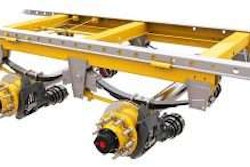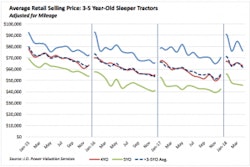The dramatic reduction of emissions from heavy-duty trucks has been one of trucking’s most impressive accomplishments over the last two decades. But for those who don’t fully understand just how much cleaner today’s trucks are, the Diesel Technology Forum (DTF) says a University of California Riverside study has made it easier to understand.
According to a study completed by the university in 2012, charbroiling a 1/3 lb. hamburger on an open flame generates more particulate matter (PM) emissions than driving 143 miles in a new-generation heavy-duty diesel commercial truck.
With the grill-heavy Memorial Day right around the corner, the DTF says facts like the one above are a good indicator that trucking’s potential for near-zero emissions could one day become a reality.
“It’s unusual to compare the emissions from a backyard burger cookout to operating a big rig truck, but it’s instructive to understand the contributions of different emissions sources to our air quality,” says Allen Schaeffer, executive director of the Diesel Technology Forum.
“This comparison illustrates that our newest generation of diesel technology vehicles can achieve near-zero emissions. The diesel engines of today nearly eliminate PM emissions – more than a 95 percent reduction from older generations of the technology. They also cut nitrogen oxides (NOx) emissions by up to 90 percent; lower hydrocarbon and carbon monoxide emissions by 50 to 90 percent; and lower soot emissions by 10 percent.”
Thanks in part to the growing penetration of the latest generation diesel technologies, DTF says air quality indicators across the United States continue to improve. According to the most recent national data from the U.S. Environmental Protection Agency, PM emissions in the United States have fallen 21 percent and NOx emissions are down 31 percent. Emissions attributable to things that move – cars, trucks, equipment, ships, trains, etc. – are down by 7 percent for PM and 16 percent for NOx. Meanwhile, DTF says the number of miles traveled by cars, trucks, buses and equipment has grown by 31 percent. The transportation-related emission reductions can be attributed to improvements in engine and fuel technology, and the adoption of advanced diesel engines.
“By drastically reducing all these smog-contributing factors, diesel engines both large and small contribute to cleaner air, healthier communities and a greener planet,” says Schaeffer. “And, as more car drivers choose the latest generation diesel as an option for their own vehicles, diesel’s clean air and greenhouse gas benefits will only continue to compound.”









